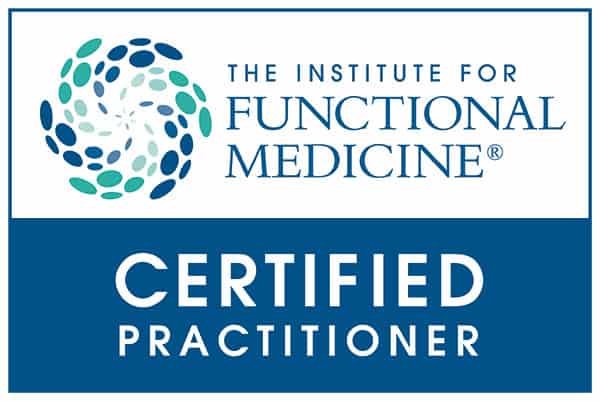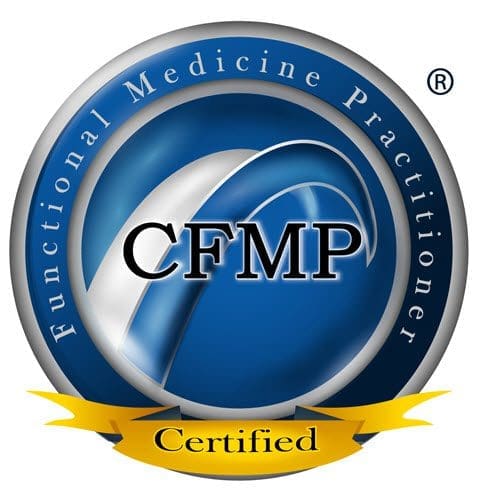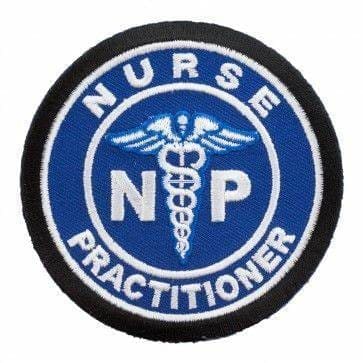Understand the benefits of chiropractic care for those suffering from five musculoskeletal issues and regain your quality of life.
Contents
Chiropractic Care: A Comprehensive Guide to Managing Common Musculoskeletal Issues
Musculoskeletal issues can turn everyday activities into a real pain in the neck—literally! Just like Herman Munster, who often lumbered around with a stiff back and a creaky neck, many of us deal with aches and pains that make us feel like we’ve got a bolt loose. Fortunately, modern chiropractic care provides a non-invasive, drug-free approach to regaining our optimal health. In this blog post, we’ll explore five common musculoskeletal conditions—subluxation, scoliosis, disk degeneration, carpal tunnel syndrome, and Achilles tendonitis—and explain how chiropractic care, particularly from experts like Dr. Alexander Jimenez in El Paso, Texas, can help. We’ll also delve into the critical role chiropractic plays in personal injury cases, with a touch of humor to keep things light, but rest assured, we’ll conclude with a serious note.
Subluxation—“When Your Spine’s Out of Line”
What is Subluxation?
Imagine your spine as a stack of building blocks. If one block slips out of place, the whole tower wobbles, causing all sorts of trouble. In chiropractic terms杀了subluxation refers to a misalignment or dysfunction of a vertebra in the spine, which can put pressure on nerves, leading to pain, stiffness, or even headaches. Common causes include trauma (like a car accident), poor posture, arthritis, or muscle spasms. Neck subluxations are especially common, affecting many people due to prolonged sitting or stress.
Subluxations can make daily tasks, such as turning your head or bending over, feel like a scene from a horror movie. You might feel sharp pain, stiffness, or even tingling in your arms or legs if nerves are compressed. Left untreated, these misalignments can lead to chronic issues, much like ignoring a creaky door until it falls off its hinges.
How Chiropractic Care Helps
Chiropractors, like skilled architects, use spinal adjustments to nudge those wayward vertebrae back into place. These gentle, precise movements aim to restore proper alignment, reduce nerve interference, and promote the body’s natural healing. Think of it as straightening out a kink in a garden hose to let the water flow freely again. By improving spinal function, chiropractic care can alleviate pain, enhance mobility, and even boost overall wellness.
Clinical Rationale
The spine houses the spinal cord, a key part of the nervous system that controls bodily functions. A misaligned vertebra can irritate nerves, disrupting communication between the brain and body. Chiropractic adjustments aim to correct these misalignments, potentially reducing pain and improving function. While the term “subluxation” is debated in mainstream medicine due to limited empirical evidence, patient-reported outcomes often highlight significant relief from chiropractic care (Terlep Chiropractic, 2023).
Dr. Jimenez’s Approach
Dr. Alexander Jimenez, a leading chiropractor in El Paso, utilizes advanced diagnostic tools, including X-rays, to accurately identify subluxations. His evidence-based approach involves tailored adjustments and functional medicine to address underlying causes, such as poor posture or muscle imbalances, thereby ensuring long-term relief.
References
Terlep Chiropractic. (2023, May 24). Understanding subluxation: A key concept in chiropractic care. https://drterlep.com/understanding-subluxation-a-key-concept-in-chiropractic-care/
Scoliosis—“When Your Spine Takes a Detour”
What is Scoliosis?
Scoliosis is like your spine deciding to take a scenic route, curving sideways in an “S” or “C” shape. This abnormal curvature often develops in childhood due to unknown causes (idiopathic scoliosis), trauma, or abnormal bone growth. It can lead to back pain, uneven shoulders or hips, and difficulty moving, making everyday activities like carrying a backpack or sitting for long periods uncomfortable.
How Chiropractic Care Helps
While chiropractic care may not fully correct a scoliotic spine, it can significantly reduce pain and improve function. Chiropractors use posture evaluations and manual manipulations to enhance spinal alignment and mobility. Specific exercises, such as those in the ScoliSMART method, can complement adjustments to strengthen supporting muscles and improve posture, making daily life more manageable.
Clinical Rationale
Research suggests that chiropractic care can provide short-term pain relief and improve mobility in patients with scoliosis, although it doesn’t correct the curvature itself (Healthline, 2024). Adjustments can help reduce muscle tension and improve joint function, while rehabilitation programs may slow the progression of a curve in mild cases.
Dr. Jimenez’s Expertise
At El Paso’s Chiropractic Rehabilitation Clinic, Dr. Jimenez employs a multidisciplinary approach, combining chiropractic adjustments with physical therapy and nutritional counseling. His personalized care plans, informed by detailed imaging, help patients with scoliosis manage their symptoms and maintain an active lifestyle.
References
Healthline. (2024, July 12). Chiropractic for scoliosis: Does it help treat it or its symptoms? https://www.healthline.com/health/scoliosis/scoliosis-chiropractor
El Paso Back Clinic. (n.d.). Chiropractic benefits for scoliosis sufferers. https://www.elpasobackclinic.com/chiropractic-benefits-sufferers-scoliosis/
Disk Degeneration—“When Your Shock Absorbers Wear Out”
What is Disk Degeneration?
As we age, the spinal disks—those cushy pads between vertebrae—lose fluid and elasticity, much like the shock absorbers in an old car. This degenerative disc disease (DDD) is common in people over 55 and can cause neck or back pain, stiffness, and reduced flexibility. Everyday tasks, such as sitting, lifting, or twisting, can become painful, making simple movements a challenge.
How Chiropractic Care Helps
Chiropractic care for DDD involves spinal adjustments to improve joint mechanics and reduce nerve compression, thereby enhancing overall spinal health. Techniques like flexion-distraction gently stretch the spine, relieving pressure on affected disks. This can make getting out of bed or sitting at a desk feel less like a wrestling match with your spine.
Clinical Rationale
By improving spinal alignment and reducing inflammation, chiropractic adjustments can alleviate pain and enhance mobility in early-stage DDD (Advantage Spinal Dynamics, 2024). Studies, such as one involving a geriatric patient with DDD, showed significant pain reduction and improved ambulation after chiropractic treatment (Daniels et al., 2012).
Dr. Jimenez’s Approach
Dr. Jimenez uses advanced imaging to assess disk degeneration and tailors treatments to each patient’s needs. His clinic offers spinal decompression and manual therapies to reduce stress on disks, helping patients regain comfort and function.
References
Advantage Spinal Dynamics. (2024, September 30). How chiropractic treatment helps with degenerative disc disease. https://www.advantageinnovativemedicine.com/blog/how-chiropractic-treatment-helps-with-degenerative-disc-disease
Daniels, C. J., & Morrell, A. P. (2012). Chiropractic management of a veteran with lower back pain associated with diffuse idiopathic skeletal hypertrophy and degenerative disk disease. Journal of Chiropractic Medicine, 11(4), 300–307. https://www.ncbi.nlm.nih.gov/pmc/articles/PMC3706700/
Carpal Tunnel Syndrome—“A Traffic Jam in Your Wrist”
What is Carpal Tunnel Syndrome?
Carpal tunnel syndrome (CTS) is akin to a traffic jam in your wrist, where the median nerve becomes compressed, resulting in numbness, tingling, and weakness in the hand. Often triggered by repetitive motions like typing or assembly line work, CTS can make gripping a coffee mug or buttoning a shirt feel like a Herculean task.
How Chiropractic Care Helps
Chiropractors use wrist, elbow, and cervical spine adjustments to relieve pressure on the median nerve. Soft tissue therapies and therapeutic exercises can further reduce inflammation and restore hand function. It’s like clearing the traffic to let nerve signals flow smoothly again.
Clinical Rationale
A case study demonstrated that chiropractic manipulations resulted in increased grip strength and normalized nerve function in a patient with CTS (Davis et al., 1994). By addressing misalignments in the spine and wrist, chiropractic care can offer lasting relief without the need for surgery.
Dr. Jimenez’s Expertise
Dr. Jimenez’s sports medicine background enhances his ability to treat CTS, especially in athletes or workers with repetitive strain injuries. His clinic offers targeted therapies, including stretches and adjustments, to improve wrist mobility and reduce symptoms.
References
Davis, P. T., Hulbert, J. R., Kassak, K. M., & Meyer, J. J. (1994). Chiropractic manipulation in carpal tunnel syndrome. Journal of Manipulative and Physiological Therapeutics, 17(4), 246–249. https://pubmed.ncbi.nlm.nih.gov/8046280/
Dr. Alex Jimenez. (n.d.). Carpal tunnel pain treatment. https://www.dralexjimenez.com/carpal-tunnel-pain-treatment/
Movement Medicine: Chiropractic Care- Video
Achilles Tendonitis—“When Your Heel’s Got a Grudge”
What is Achilles Tendonitis?
Achilles tendonitis is an overuse injury of the tendon connecting your calf muscles to your heel bone, common among runners and weekend warriors. It causes pain and stiffness in the heel, making walking, running, or even standing a real challenge. If left untreated, it can lead to serious complications, such as tendon rupture.
How Chiropractic Care Helps
Chiropractic care for Achilles tendonitis involves adjustments to the foot, ankle, and spine to correct misalignments that contribute to stress on the tendon. Techniques like Active Release Technique (ART) and Graston reduce scar tissue and inflammation, promoting faster healing. It’s like giving your tendon a much-needed vacation.
Clinical Rationale
Chiropractic adjustments and soft tissue therapies can enhance blood flow and alleviate tension in the Achilles tendon, thereby aiding in recovery (Stamford Spine, 2024). These treatments address biomechanical issues, such as misaligned joints, that exacerbate tendonitis.
Dr. Jimenez’s Approach
Dr. Jimenez’s holistic approach includes functional movement analysis to identify and correct biomechanical errors. His clinic offers manual therapies and rehabilitation exercises to restore function and prevent recurrence, helping patients regain their mobility—literally.
References
Stamford Spine. (2024, August 27). How chiropractic therapy helps Achilles tendonitis. https://stamfordspine.com/how-chiropractic-therapy-helps-achilles-tendonitis/
Personal Injury Cases—“Getting Back on Track After an Accident”
The Role of Chiropractic Care
Personal injuries from auto accidents, workplace incidents, or sports can result in musculoskeletal issues like whiplash, back pain, or joint injuries. Chiropractic care is essential for recovery, providing non-invasive treatments that alleviate pain, restore mobility, and prevent chronic issues. In El Paso, where car accidents are a common cause of injury, chiropractors play a vital role in helping victims regain their quality of life.
Dr. Jimenez’s Expertise
Dr. Alexander Jimenez stands out as a leading practitioner for personal injury cases in El Paso. With qualifications as a Doctor of Chiropractic, Advanced Practice Registered Nurse, and Family Nurse Practitioner, he brings a unique blend of expertise to his practice. His clinic, El Paso’s Chiropractic Rehabilitation Clinic & Integrated Medicine Center, utilizes advanced imaging techniques (e.g., X-rays, MRIs) and comprehensive diagnostic evaluations to assess injuries accurately. Dr. Jimenez employs a multidisciplinary approach, combining chiropractic adjustments, spinal decompression, acupuncture, and functional medicine to create personalized treatment plans.
Clinical and Legal Liaison
Dr. Jimenez’s ability to associate patient injuries with detailed medical documentation makes him an invaluable asset in personal injury cases. His comprehensive reports, supported by advanced diagnostics, provide clear evidence for insurance claims and legal proceedings. By bridging medical care and legal documentation, he ensures patients receive both effective treatment and the support needed for fair compensation.
Clinical Rationale
Chiropractic care can accelerate recovery from personal injuries by addressing soft tissue damage, spinal misalignments, and nerve irritation, thereby promoting overall well-being. For example, a study on whiplash injuries showed that chiropractic treatment significantly reduced pain and improved range of motion (Woodward et al., 1996). Dr. Jimenez’s use of dual-scope procedures, which combine chiropractic and functional medicine, enhances outcomes by addressing both structural and systemic issues.
References
Woodward, M. N., Cook, J. C., & Gargan, M. F. (1996). Chiropractic treatment of chronic whiplash injuries. Injury, 27(9), 643–645. https://pubmed.ncbi.nlm.nih.gov/8977844/
El Paso Back Clinic. (n.d.). Services: Personal injury care. https://elpasobackclinic.com/services/personal-injury/
Additional Insights from Research
Supporting Studies
- Gluteal Muscle Activation and Low Back Pain: Research indicates that activating the gluteal muscles during walking can reduce low back pain, which may be related to disk degeneration and subluxation treatments (Bullock-Saxton et al., 1993). Chiropractic care often includes exercises to strengthen these muscles, enhancing spinal stability.
- Mitochondria and Osteoarthritis: Mitochondrial dysfunction can contribute to osteoarthritis, which may overlap with disk degeneration in the spine (Blanco et al., 2011). Chiropractic care’s focus on reducing inflammation may support joint health.
- Brain Plasticity and Spinal Injuries: Studies on brain plasticity suggest that spinal adjustments may influence neurological function, potentially aiding recovery from severe injuries (Haavik & Murphy, 2012).
References
Bullock-Saxton, J. E., Janda, V., & Bullock, M. I. (1993). Reflex activation of gluteal muscles in walking: An approach to restoration of muscle function for patients with low-back pain. Spine, 18(6), 704–708. https://pubmed.ncbi.nlm.nih.gov/8516697/
Blanco, F. J., Rego, I., & Ruiz-Romero, C. (2011). The role of mitochondria in osteoarthritis. Nature Reviews Rheumatology, 7(3), 161–169. https://pubmed.ncbi.nlm.nih.gov/21200395/
Haavik, H., & Murphy, B. (2012). Brain plasticity in patients with spinal cord injuries: A systematic review. Journal of Neurotrauma, 29(10), 1681–1695. https://pubmed.ncbi.nlm.nih.gov/22471998/
Conclusion
Chiropractic care offers a promising, non-invasive approach to managing subluxation, scoliosis, disk degeneration, carpal tunnel syndrome, and Achilles tendonitis. By addressing spinal and joint misalignments, reducing nerve compression, and promoting natural healing, chiropractors like Dr. Alexander Jimenez help patients regain comfort and function. In personal injury cases, Dr. Jimenez’s expertise in diagnostics and documentation ensures comprehensive care and legal support, making him a trusted practitioner in El Paso.
Disclaimer: This blog post is for informational purposes only and is not a substitute for professional medical advice, diagnosis, or treatment. Always consult a qualified healthcare provider for personalized guidance on musculoskeletal conditions or injuries.
General Disclaimer, Licenses and Board Certifications *
Professional Scope of Practice *
The information herein on "Chiropractic Care Approaches for Five Musculoskeletal Issues" is not intended to replace a one-on-one relationship with a qualified health care professional or licensed physician and is not medical advice. We encourage you to make healthcare decisions based on your research and partnership with a qualified healthcare professional.
Blog Information & Scope Discussions
Welcome to El Paso's Premier Wellness and Injury Care Clinic & Wellness Blog, where Dr. Alex Jimenez, DC, FNP-C, a Multi-State board-certified Family Practice Nurse Practitioner (FNP-BC) and Chiropractor (DC), presents insights on how our multidisciplinary team is dedicated to holistic healing and personalized care. Our practice aligns with evidence-based treatment protocols inspired by integrative medicine principles, similar to those on this site and on our family practice-based chiromed.com site, focusing on naturally restoring health for patients of all ages.
Our areas of multidisciplinary practice include Wellness & Nutrition, Chronic Pain, Personal Injury, Auto Accident Care, Work Injuries, Back Injury, Low Back Pain, Neck Pain, Migraine Headaches, Sports Injuries, Severe Sciatica, Scoliosis, Complex Herniated Discs, Fibromyalgia, Chronic Pain, Complex Injuries, Stress Management, Functional Medicine Treatments, and in-scope care protocols.
Our information scope is multidisciplinary, focusing on musculoskeletal and physical medicine, wellness, contributing etiological viscerosomatic disturbances within clinical presentations, associated somato-visceral reflex clinical dynamics, subluxation complexes, sensitive health issues, and functional medicine articles, topics, and discussions.
We provide and present clinical collaboration with specialists from various disciplines. Each specialist is governed by their professional scope of practice and their jurisdiction of licensure. We use functional health & wellness protocols to treat and support care for musculoskeletal injuries or disorders.
Our videos, posts, topics, and insights address clinical matters and issues that are directly or indirectly related to our clinical scope of practice.
Our office has made a reasonable effort to provide supportive citations and has identified relevant research studies that support our posts. We provide copies of supporting research studies upon request to regulatory boards and the public.
We understand that we cover matters that require an additional explanation of how they may assist in a particular care plan or treatment protocol; therefore, to discuss the subject matter above further, please feel free to ask Dr. Alex Jimenez, DC, APRN, FNP-BC, or contact us at 915-850-0900.
We are here to help you and your family.
Blessings
Dr. Alex Jimenez DC, MSACP, APRN, FNP-BC*, CCST, IFMCP, CFMP, ATN
email: coach@elpasofunctionalmedicine.com
Multidisciplinary Licensing & Board Certifications:
Licensed as a Doctor of Chiropractic (DC) in Texas & New Mexico*
Texas DC License #: TX5807, Verified: TX5807
New Mexico DC License #: NM-DC2182, Verified: NM-DC2182
Multi-State Advanced Practice Registered Nurse (APRN*) in Texas & Multi-States
Multi-state Compact APRN License by Endorsement (42 States)
Texas APRN License #: 1191402, Verified: 1191402 *
Florida APRN License #: 11043890, Verified: APRN11043890 *
License Verification Link: Nursys License Verifier
* Prescriptive Authority Authorized
ANCC FNP-BC: Board Certified Nurse Practitioner*
Compact Status: Multi-State License: Authorized to Practice in 40 States*
Graduate with Honors: ICHS: MSN-FNP (Family Nurse Practitioner Program)
Degree Granted. Master's in Family Practice MSN Diploma (Cum Laude)
Dr. Alex Jimenez, DC, APRN, FNP-BC*, CFMP, IFMCP, ATN, CCST
My Digital Business Card
Licenses and Board Certifications:
DC: Doctor of Chiropractic
APRNP: Advanced Practice Registered Nurse
FNP-BC: Family Practice Specialization (Multi-State Board Certified)
RN: Registered Nurse (Multi-State Compact License)
CFMP: Certified Functional Medicine Provider
MSN-FNP: Master of Science in Family Practice Medicine
MSACP: Master of Science in Advanced Clinical Practice
IFMCP: Institute of Functional Medicine
CCST: Certified Chiropractic Spinal Trauma
ATN: Advanced Translational Neutrogenomics
Memberships & Associations:
TCA: Texas Chiropractic Association: Member ID: 104311
AANP: American Association of Nurse Practitioners: Member ID: 2198960
ANA: American Nurse Association: Member ID: 06458222 (District TX01)
TNA: Texas Nurse Association: Member ID: 06458222
NPI: 1205907805
| Primary Taxonomy | Selected Taxonomy | State | License Number |
|---|---|---|---|
| No | 111N00000X - Chiropractor | NM | DC2182 |
| Yes | 111N00000X - Chiropractor | TX | DC5807 |
| Yes | 363LF0000X - Nurse Practitioner - Family | TX | 1191402 |
| Yes | 363LF0000X - Nurse Practitioner - Family | FL | 11043890 |








